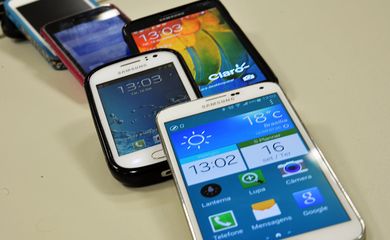Broadband and cell phone use rise in Brazil


Broadband internet in Brazil grew 44% over the 12-month period ending last February, with a total of 213 million connections—up 62 million from the previous 12-month period, or two new connections per second

Broadband internet in Brazil grew 44% over the 12-month period ending last February, with a total of 213 million connections—up 62 million from the previous 12-month period, or two new connections per second
 . Data were released Wednesday (Apr 29) by the Brazilian Telecommunications Association (Telebrasil).
. Data were released Wednesday (Apr 29) by the Brazilian Telecommunications Association (Telebrasil).
According to the association, fixed broadband is available to all Brazilian municipalities. Over the course of a year, mobile broadband served 429 municipalities. During the same period, 3G internet access was delivered to 3,930 municipalities, where 93% of Brazilians live, while 4G reached 147 cities, covering 42% of the country's population.
Communications Minister Ricardo Berzoini said that his team has nearly finished drawing up a plan expected to provide broadband to 95% of Brazilians by 2018. The challenge, he argues, will be ensuring an average connection speed of 25 Mbps (megabits per second).
At a public hearing at the Chamber of Deputies on Wednesday (29), the minister said that today all city schools have access to the internet, but low speed rates limit its use to the school administration. “In the pedagogical process, internet has still very little use. Broadband for a school capable of offering digital content aimed at enhancing its educational process needs a speed somewhere between 50 and 100 Mbps,” Berzoini explained.
The minister also talked about investments in the expansion of Brazil's 3G and 4G networks. The two mobile services have shown a “drastic” growth in the country, which is why mobile operators still struggle to meet their targets. “We're always getting complaints about the service. It's the duty of the [National Telecommunications Agency (Anatel) to inspect operators and] levy fines. We've been looking for ways to make these fines boost service quality.”
Taking into consideration a survey on the improvement plans of mobile companies', Anatel recently ruled that operators Claro, Oi, Tim, and Vivo, in addition to CTBC, Nextel, and Sercomtel, improve their network quality indicators in all of the country's municipalities. The study was conducted over the course of two years, and, according to Anatel, none of the firms was able to meet the goals promised for 2012.
Nonetheless, the use of cell phones in Brazil is still on the rise. Recent figures from the Brazilian Institute of Geography and Statistics (IBGE) reveal that the percentage of Brazilians who use a cell phone rose 131.4% from 2005 to 2013. Between 2008 and 2013, the surge stands at 49.4% (43 million people). In 2013, the Federal District (89.4%) was the unit of the federation with the highest share of people with a cell phone, followed by the states of Mato Grosso do Sul (83.5%) and Goiás (83.4%). The lowest proportions were registered in the states of Maranhão and Piauí.
Translated by Fabrício Ferreira
Fonte: Broadband and cell phone use rise in Brazil


